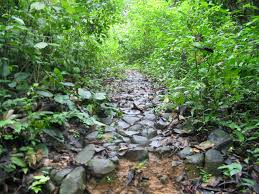Historic road to become national monument

Moves are afoot to declare the cobblestones of Camino de Cruces, built around 1530 as a national historical monument.
Technicians of the National Institute of Culture (INAC) have carried out a topographic survey and the information will be used to promote the declaration
Currently, the colonial cobblestone only enjoys Panama municipal protection.
In November 2017, the Council approved the declaration of Camino de Cruces as a route of cultural and environmental interest.
The declaration was made in the face of construction threats and tree felling.
Manuel Trute, director of Urban Planning of the Mayor’s Office said that
 INAC’s work will help preserve the road because the current municipal declaration only covers the district of Panama. “The delimitation will also be important because it will allow specifying the route of the historic path, “he added.
INAC’s work will help preserve the road because the current municipal declaration only covers the district of Panama. “The delimitation will also be important because it will allow specifying the route of the historic path, “he added.
State projects, such as the City of Health, have also generated negative impacts on the historic route.
The Camino de Cruces was one of the two historic routes of the Isthmus that connected the Caribbean Sea with the Pacific Ocean during the colonial era. It and the Camino Real were the only roads to cross the isthmus from ocean to ocean, prior to the construction of the railway.
They were used to transport gold. silver and precious stones to Portobello for transmission to Spain, and in the 1849 gold rush were used by prospectors to reach Panama to get ships to the California goldfields.
The route of the Camino de Cruces was multimodal, starting from Panama City walking on foot to the town of Venta de Cruces, on the banks of the Chagres River, then traveling with boats down the river to its mouth at the Fort of San Lorenzo in Chagres.
The road was made of stones, with a width of eight feet (twice the width of the Camino Real) and with larger master stones at the edges





